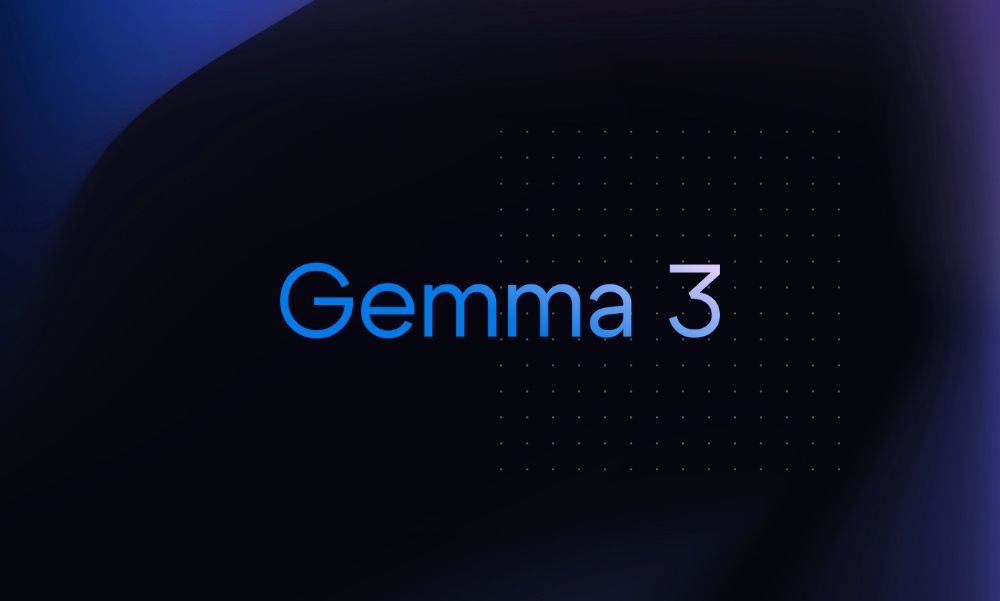Google’s Gemma 3 announcement marked a significant milestone in artificial intelligence (AI), introducing a model that seamlessly integrates language comprehension, visual processing, and physical interaction. This advancement positions Gemma 3 as a versatile AI system capable of understanding and generating text, interpreting images, and performing complex tasks in the physical world. It comes in four sizes (1B, 4B, 12B, and 27B parameters) and is optimized to run on a single AI accelerator chip while still delivering top-notch performance.

Gemma 3: The Next Evolution in AI Power and Performance.
According to Google, Gemma 3 outshines DeepSeek-V3, Meta’s Llama-405B, and OpenAI’s o3-mini, making it a standout option for developers. Plus, it features a 128,000-token context window, which helps it keep pace with competitors when it comes to managing larger inputs effectively.
In addition to Gemma 3, Google also launched ShieldGemma 2, an AI-driven image safety tool designed to spot harmful content.
Google asserts that Gemma 3 achieves 98% of DeepSeek R1’s Elo rating, with scores of 1338 vs. 1363, solidifying its status as a formidable contender in the AI arena.

Gemma 3 challenges DeepSeek R1 with a 98% Elo rating match, scoring 1338 vs. 1363—marking its place as a strong AI competitor.
Key Features and Strengths of Gemma 3 AI
Gemma 3 is crafted to redefine what AI can do, all while keeping things accessible, efficient, and packed with advanced reasoning skills. Here are Gemma 3 AI strengths which set it apart.
Top-Tier Performance on Single Accelerators
Gemma 3 AI model performance is something to reckon with for its size, surpassing Llama-405B, DeepSeek-V3, and o3-mini in early human preference tests on LMArena’s leaderboard. This makes it perfect for building engaging AI applications that operate on a single GPU or TPU host.
Multimodal Intelligence
Unlike your typical models, Gemma 3 can handle both language and vision, which means it can analyze text, images, and short videos. This opens up a world of possibilities for interactive and smart AI applications.
Supports 140+ Languages
Gemma 3 supports for over 35 languages and pretrained capabilities in more than 140 languages, empowering businesses to create AI applications for a truly global audience.
Expanded Context Window for Complex Tasks
Thanks to its 128K-token context window, Gemma 3 can process huge amounts of information simultaneously, enhancing its ability to tackle long-form content, intricate queries, and detailed analyses.
Optimized for Single GPUs
Google asserts that Gemma 3 is the most powerful AI model that can run on a single GPU, making cutting-edge AI more accessible for developers and researchers without the need for hefty computational resources.
Creative Writing & Coding Assistance
Gemma 3 produces human-like text, making it an invaluable resource for content creators, storytellers, and marketers. Plus, it offers coding assistance, providing real-time code suggestions and debugging support to elevate software development.
AI-Driven Workflows with Function Calling
Gemma 3 supports function calling and structured output, allowing developers to automate workflows and build.
Gemma 3 vs. DeepSeek AI
DeepSeek and Google’s Gemma 3 each have their unique take on AI development.
DeepSeek V3 and R1 are high-performance models that were developed with low training costs. These models have shaken up the global AI scene, especially in the US tech industry.
On the other hand, Gemma 3 is a lightweight, open-weight model crafted for efficiency, portability, and accessibility. While it might not quite reach the same level of raw intelligence or Elo rating as DeepSeek R1, it’s designed to operate on a single GPU or even mobile devices, making it a more flexible option for a broader audience.
Ultimately, DeepSeek models are all about pushing AI performance to the max, while Gemma 3 emphasizes efficiency, ease of use for developers, and adaptability.
ShieldGemma 2: Advanced Image Safety
Alongside Gemma 3, Google has rolled out ShieldGemma 2, an impressive 4B image safety checker built on the Gemma 3 framework. This tool is designed to boost AI-driven image moderation by automatically tagging images with safety labels in three main categories: dangerous content, sexually explicit material, and violence.
Impact of Google’s Gemma 3 on the AI Landscape
The launch of Gemma 3 is the next big leap towards more integrated and versatile AI systems. Its capabilities suggest a range of potential impacts:
Advancements in Robotics
With the ability to help robots comprehend and carry out complex tasks using natural language commands, Gemma 3 effectively connects AI with robotics, setting the stage for smarter and more flexible machines.
Democratization of AI
The model’s efficiency on single GPUs makes cutting-edge AI technology accessible to a broader audience, including smaller businesses and individual developers.
Creative Industries
Gemma 3 AI creative writing capabilities and coding support could transform how we create content and develop software, providing tools that enhance human creativity and productivity.
Wrap Up
The latest Gemma model is available online in Google AI Studio. The whole model can also be downloaded free of charge from repositories like Kaggle or Hugging Face. Nonetheless, there are limitations of agreement limits from Google as to what you can do.
Google doesn’t have any insight into what you’re doing on your own devices, which is why having efficient local models like Gemma 3 is a great advantage. No matter what you’re looking for, there’s a Gemma model designed to work seamlessly on your devices.
Want to know if Gemma 3 is the future of AI? Read the full article to compare its strengths and whether it’s better than Deepseek. To stay updated, subscribe to Technowize today!

